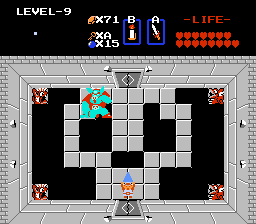Publisher: Nintendo
Year: 1987
Genre: Adventure
The Legend of Zelda! What can I possibly say about it that has not already been said more eloquently than I am able? The game has spawned numerous sequels that range from awesome to bizarre, (to the TRULY UNSPEAKABLE) but the original Legend of Zelda is the one that spawned it all!
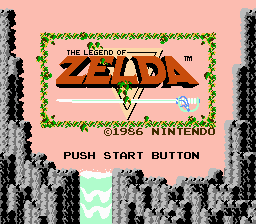
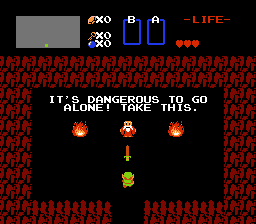
I’m not going to waste (much) time pointing out the obvious – that Zelda is the princess and Link is the green guy with the sword, that bombing dodongo is something Link cannot wait to do, that they finally released a timeline (after literally decades of speculation), that Link’s one true catchphrase is “Excuuuuuuse me, Princess” or that it’s dangerous to go alone, and you should take this.
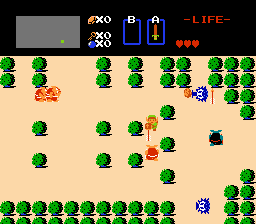
You’ll be hard pressed to find a Nintendo adventure game more influential than The Legend of Zelda. It was a pioneer that codified so many aspects of adventure games that we now take for granted. Consider the red-enemy blue-enemy system. Nearly every non-boss enemy in the Legend of Zelda appears twice, once with a red version and once with a blue. The blue version is invariably more powerful. Since then, video games have been cribbing this formula. Why? Because it does what it does so well! Players immediately know something about the enemy’s attack pattern, given that it is an upgraded version of another enemy, but they also now know that it’s more powerful; it has the dual purpose of telling the player that the enemy is stronger AND allowing the player to apply their knowledge of the game’s patterns to more difficult enemies. Players get the satisfaction of being able to use information they’ve already acquired while also being challenged by a more powerful enemy. It’s a win-win.
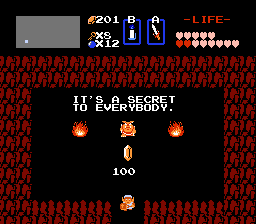
This isn’t the only formula that The Legend of Zelda codified. The iconic sound that plays when you discover a secret is spectacular in that it communicates perfectly the fact that you have discovered something worth finding… unless you broke in a hermit’s door… in which case you didn’t really want those rupees anyway, did you? But most of the time, you found just what you were looking for – a renegade moblin with an agenda against his dark master and money to burn. Or maybe an old man who offers you a heart or a potion (take the heart, you dope!). Or even an old lady who sells you medicine. Doesn’t really matter – you throw your flame, you drop your bomb, the tones play, and you know you got something!
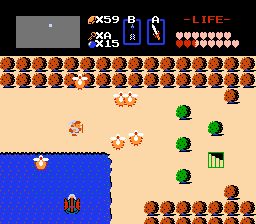
The Legend of Zelda also popularized the open-world exploration aspect. While it is by no means the first game to allow the player to explore wherever you like, it popularized the idea, and gave the player a sort of linear progression that didn’t feel especially forced. There are nine dungeons – eight Triforce dungeons, and Ganon’s own dungeon at Spectacle Rock – and for most of them, the treasure from the previous dungeon is necessary to progress to (or through) the next. This helped achieve an open-world feel without allowing the player to bite off more than they can chew too soon.
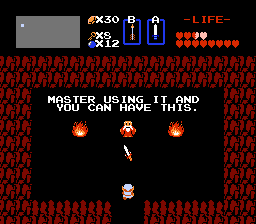
The weapon powerups – the silver and magic swords – require you to have a certain number of hearts to obtain them which, for the magic sword, requires you to beat several dungeons. The upgraded weapons are technically not essential – nor are the rings that reduce damage – but I wouldn’t want to try to beat the game without them… mostly because as a kid I did. I never got the red ring, the spellbook or the magic key. I assumed (correctly in 1 out of 3 cases) that they were in the final dungeon and that I would just happen upon them. Eventually I happened upon Ganon and it all became irrelevant.
Oh, and did I mention that once you finish the game, there’s an entire second quest? Not just a tougher New Game+ type experience, but a brand new map with an entirely new set of secrets, dungeons and… no, unfortunately the items are the same, you just get some of them in a different order.
John’s Score: 5.0 out of 5.0. There is good reason that The Legend of Zelda has stood the test of time. The game is challenging, but not brutal. The worst I can say for it is that the dungeon music is repetitive and will drive you absolutely bonkers, but that’s a relatively minor criticism compared to how well-crafted and entertaining the game is.
